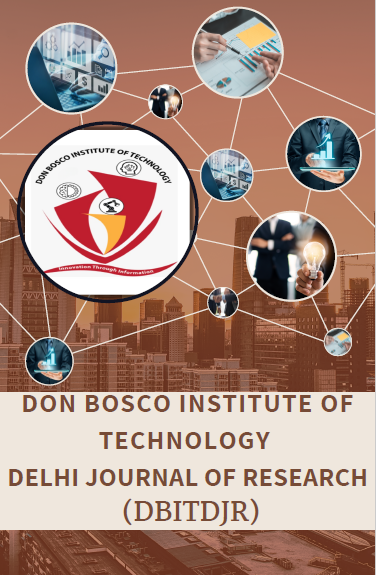Indian Banks Mergers and Acquisitions- Conceptual Review
DOI:
https://doi.org/10.48165/dbitdjr.2024.1.01.01Keywords:
Mergers, Acquisitions, Banking, Sector, India, Synergy, Managerial Efficiency, Ethical Considerations, Legal AspectsAbstract
Purpose- The paper aims to provide a conceptual review of mergers and acquisitions (M&A) in the Indian banking sector, highlighting the evolution, strategic motivations, legal aspects, and ethical considerations of M&A activities. Design/methodology/approach- The research methodology involves a qualitative literature review of scholarly articles, books, and relevant academic sources. The review focuses on identifying key themes related to the motivations, processes, and outcomes of M&A in the banking sector. Findings- The study finds that M&A activities in the Indian banking sector are primarily driven by the need for synergy, improved managerial efficiency, growth, and technological advancements. Synergies achieved through M&A can enhance revenue, performance, and cost efficiency. The paper also highlights the importance of ethical considerations and cultural integration during M&A processes to ensure smooth transitions and maintain organizational stability. Research limitations/implications- This study is based on existing literature, and empirical validation through case studies or primary data could further substantiate the findings. Future research could explore the long-term impact of M&A on financial performance and stakeholder value in the Indian banking sector. Practical implications- The findings provide valuable insights for banking sector stakeholders, by elucidating the strategic motivations and critical factors influencing successful M&A transactions. Originality/value- The paper offers a detailed conceptual framework for understanding the dynamics of M&A in the Indian banking sector, contributing to the existing body of knowledge and guiding future research and practice in this field.
References
Alias, N., Yaacob, M. H., & Jaffar, N. (2017). Governance struc ture, corporate restructuring and performance. Polish Journal of Management Studies, 15.
Appelbaum, S. H., Gandell, J., Yortis, H., Proper, S. & Jobin, F. (2000). Anatomy of a Merger: Behavior of Organizational Factors and Processes Throughout the Pre‐During‐Post‐ Stages (Part 1). Management Decision, 38(1), 649-661.
Aurora, R. S., Shetty, K. & Kale, S. (2014). Mergers and Acquisitions (Fourth ed.). Oxford University Press.
Awdeh, A. & Moussawi, C. E. (2011). Analyzing the Motives and the outcomes of Bank Mergers. Middle Eastern Finance and Economics, 15, 06-20.
Azhagaiah, R., & Kumar, T. S. (2011). Corporate restructuring and firms’ performance: An empirical analysis of selected firms across corporate sectors in India. Interdisciplinary Journal of Research in Business, 1(4), 58-82.
Beena, P. L. (2004). Towards understanding the merger-wave in the Indian corporate sector: A comparative perspective. Gandhi, R. (2016). Consolidation among Public Sector Banks. RBI Bulletin, May 2016, 17-19.
Godbole, P. G. (2013). Mergers, Acquisitions and Corporate Restructuring (Second ed.). Vikas Publishing house, U.P. Kwabla-King, D. (2017). Synergies from Mergers and Acquisitions:
A Study of Eco Bank Ghana Limited and the Trust Bank. Texila International Journal of Management, 3(2), 01-09. Lahoti, J. H. (2016). An Experiential Study of Mergers and Acquisitions in Indian Banking Sector. PARIPEX-Indian Journal of Research, (4), 398-400.
Leepsa, N. M., & Mishra, C. S. (2012). Post merger financial performance: A study with reference to select manufactur ing companies in India. International Research Journal of Finance and Economics, 83(83), 6-17.
McGee, R. W. (2004). Some Overlooked Ethical Issues in Acquisitions and Mergers. Presented at the Global Conference on Business Economics, Association for Business and Economics Research, 01-10.
Reserve Bank of India. (2005, May 11). RBI/2004-05/462 Ref. DBOD.No.PSBS.BC. 89/16.13.100/2004-05. Retrieved from https://rbidocs.rbi.org.in/rdocs/notification/PDFs/62947.pdf




